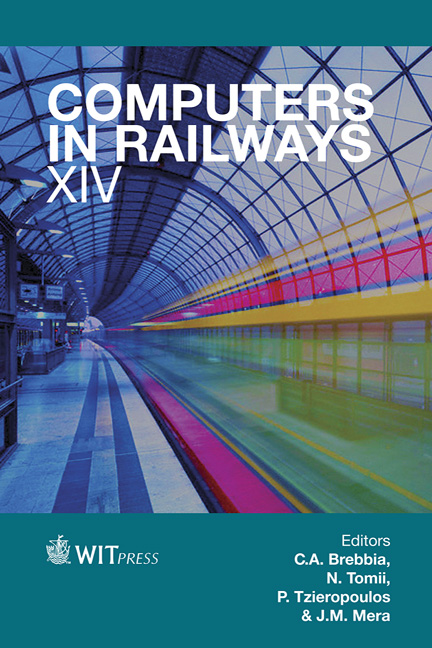Particulate Matter Concentrations In A New Section Of Metro Line: A Case Study In Italy
Price
Free (open access)
Transaction
Volume
135
Pages
12
Page Range
523 - 534
Published
2014
Size
1,387 kb
Paper DOI
10.2495/CR140431
Copyright
WIT Press
Author(s)
A. Cartenì & S. Campana
Abstract
All round the world, many studies have measured elevated concentrations of Particulate Matter (PM) in underground metro systems, with non-negligible implications for human health due to protracted exposition to fine particles. Starting from this consideration, the aim of this research was to investigate what is the \“aging time” needed to measure high PM concentrations also in new stations of an underground metro line. This was possible taking advantage of the opening, in December 2013, of a new section of the Naples (Italy) line 1 railways. The Naples underground metro line 1 before December 31 was long – about 13 km with 14 stations. The new section, opened in December, consists of 5 new kilometres of line and 3 new stations. During the period December 2013– January 2014, an extensive sampling survey was conducted to measure PM10 concentrations both in the \“historical” stations and in the \“new” ones. The results of the study are twofold: a) the PM10 concentrations measured in the historical stations confirm the average values of literature; b) just a few days after the opening of the new metro section, high PM10 concentrations were also measured in the new stations with average PM10 values comparable (from a statistical point of view) with those measured in the historical stations of the line. This result suggests that PM10 pollution in the historical section is delivered by the motion of the trains, almost immediately, into the new section of the line (\“piston effect”). Keywords: Particulate Matter, PM, underground rail, transport microenvironment, indoor quality.
Keywords
Particulate Matter, PM, underground rail, transport microenvironment, indoor quality.





